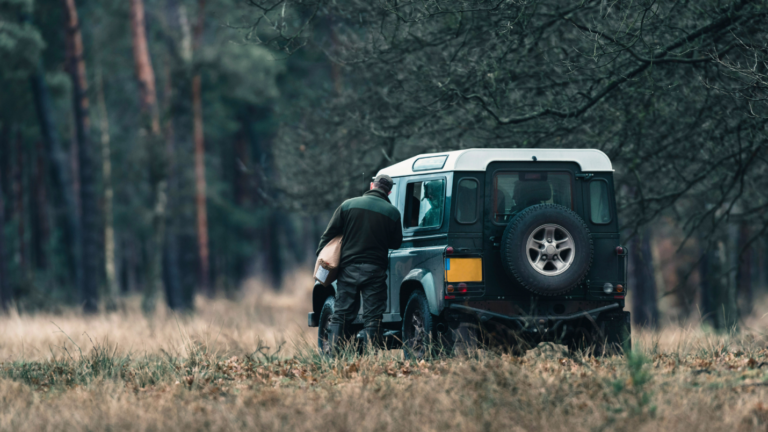Restoring a classic Jeep is a rewarding yet challenging project. Whether you’re bringing an old Willys MB back to life or reviving a vintage CJ-5, the process requires patience, expertise, and the right resources. However, many restoration enthusiasts quickly realize that classic Jeep restoration comes with its fair share of roadblocks. From sourcing rare parts to dealing with rust, these challenges can slow progress and increase costs. Here are five common challenges in classic Jeep restoration—and how to overcome them.
1. Finding Original or High-Quality Replacement Parts
One of the biggest hurdles in restoring a classic Jeep is locating original or high-quality replacement parts. Many classic Jeeps have been out of production for decades, making certain components rare and expensive. From body panels to dashboard switches, some parts may no longer be readily available.
How to Overcome It:
- Join Classic Jeep Forums & Clubs: Online communities like Jeep forums, Facebook groups, and dedicated Jeep clubs can connect you with collectors and suppliers.
- Use Specialty Suppliers: Some companies specialize in manufacturing reproduction parts for classic Jeeps. Research trusted vendors who provide quality replacements.
- Salvage Yards & Swap Meets: Auto salvage yards, junkyards, and off-road swap meets are great places to find used parts that are still in good condition.
- Consider Fabrication: If a part is impossible to find, custom fabrication may be your best option. Some Jeep restoration shops can craft parts that match the original specifications.
2. Dealing with Rust and Corrosion
Classic Jeeps were built to endure rugged terrain, but exposure to moisture, salt, and dirt over the years can lead to severe rust and corrosion. Frame rust is especially problematic, as it can weaken the structural integrity of the vehicle.
How to Overcome It:
- Assess the Damage Thoroughly: Before starting restoration, inspect the entire Jeep for rust, especially in the frame, floor pans, wheel wells, and undercarriage.
- Use Rust Converters & Sealants: For minor surface rust, applying rust converters and sealants can stop further deterioration.
- Replace Heavily Rusted Panels: If the rust is extensive, replacing affected panels or sections of the frame is a safer option than trying to patch them.
- Proper Storage & Prevention: After restoration, store your Jeep in a dry, climate-controlled garage and apply protective coatings to prevent future rust issues.
3. Electrical System Headaches
Older Jeeps often have outdated or damaged wiring, which can lead to electrical failures, shorts, and inconsistent performance. Many classic Jeep restorers find that brittle wires, corroded connectors, and faulty switches make the electrical system one of the toughest parts to tackle.
How to Overcome It:
- Start with a Wiring Diagram: Obtain the original wiring diagram for your Jeep model to understand its layout.
- Inspect and Replace Old Wiring: Instead of repairing individual wires, consider replacing the entire wiring harness to avoid future problems.
- Upgrade Where Necessary: While keeping a Jeep original is appealing, upgrading certain electrical components—such as fuses, alternators, and battery terminals—can improve reliability.
- Check Grounds and Connections: Many electrical problems stem from bad grounds or corroded connections. Cleaning or replacing them can resolve most issues.
4. Engine and Drivetrain Rebuilds
Classic Jeeps were built tough, but time and wear take their toll on the engine, transmission, and drivetrain. Depending on the Jeep’s condition, you may need a complete engine rebuild, transmission repair, or axle restoration.
How to Overcome It:
- Perform a Compression Test: Before deciding on an engine rebuild, test the compression to determine if the engine can still run efficiently.
- Consider an Engine Swap: If rebuilding the original engine isn’t cost-effective, swapping in a more reliable and fuel-efficient engine can be a better long-term investment.
- Rebuild or Upgrade the Transmission: If your Jeep has a manual transmission, replacing worn synchros and bearings can improve shifting. For automatic transmissions, ensure proper fluid changes and servicing.
- Check and Reinforce Axles & Differentials: If you’re restoring a Jeep for off-road use, upgrading to stronger axles and differentials can enhance durability and performance.
5. Maintaining Authenticity vs. Modern Upgrades
A common dilemma in classic Jeep restoration is deciding whether to keep everything original or incorporate modern upgrades for improved performance, safety, and comfort. While authenticity is important for collectors, some factory features may not meet today’s standards.
How to Overcome It:
- Prioritize Safety Upgrades: While staying true to the original design is appealing, adding disc brakes, power steering, or seat belt upgrades can improve safety without drastically altering the Jeep’s character.
- Use Period-Correct Replacements: If you want an authentic restoration, seek out reproduction parts that match the original factory specs.
- Blend Modern Convenience with Classic Design: Upgrading elements like LED headlights, modern shocks, and better tires can enhance drivability while maintaining the Jeep’s vintage appeal.
- Document Everything: Whether restoring for personal enjoyment or future resale, keeping detailed records of parts used, upgrades made, and modifications performed helps maintain value and authenticity.
Restoring a classic Jeep is an exciting yet challenging journey. From sourcing rare parts to dealing with rust and electrical issues, each step requires patience, expertise, and the right approach. By understanding these common restoration challenges and applying strategic solutions, you can bring your Jeep back to life and enjoy the adventure for years to come. Whether you’re tackling a full-frame restoration or a simple refresh, working with experts and planning carefully will ensure a successful project.


Comments are closed.